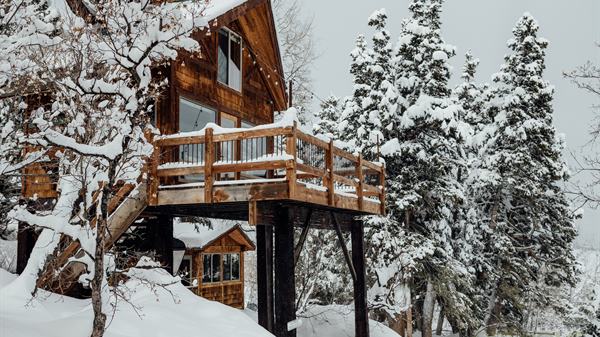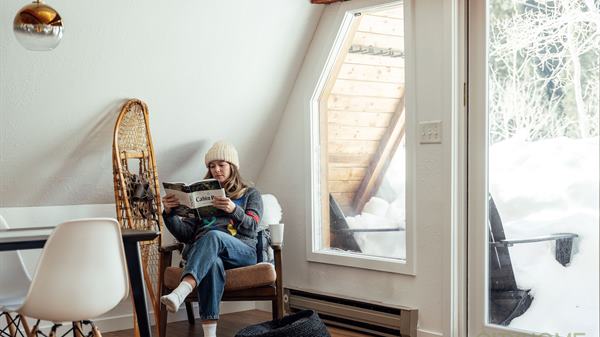In this, our culture of strip malls, subdivisions, and otherwise over-development, there are very few places left completely, sublimely, untouched. Few spaces forged by nothing but time and weather, and perhaps the hand of god. Very few places left as they were before…us. But for those willing to wander a few hours south of SLC, that place exists. It’s no secret that southern Utah is home to a few wonders of the western world–Valley of the Gods, Dead Horse Point, Monument Valley. There’s a wealth of natural beauty at our fingertips–sandstone skyscrapers and red rock coliseums–and so many reasons to make yourself acquainted with our sister cities to the south. In the interest of introductions, allow us to present to you two more (beautiful, original, and oh-so-inspiring) reasons.
Against an expansive backdrop of sagebrush and brick-red dust, set back from a lone highway, you’ll find two starkly striking structures. They’re the work of DesignBuildBLUFF–an innovative organization that allows architecture students from the University of Utah the chance to design and build homes first-hand, typically for families in need. Branching out a bit from their usual order of operations, the group (headed by the incomparable José Galarza) designed and brought to life two enchantingly-modern cabins in a small town south of Bluff. It’s called Mexican Hat, and it’s home to the Navajo Nation’s Mexican Water Chapter. José and DesignBuildBLUFF teamed with the Chapter heads to develop two contemporary cabins, with the idea in mind that “tourism dollars otherwise lost outside the boundaries of the reservation could rather stay and help encourage the local economy.” A combination of reclaimed barn wood and weathered steel, the structures are a sublime mixture of organic vim and man-made vigor.
And, for the record, “cabin” is a term used very loosely, here.
The sisters, dubbed Sunrise and Sunset, are stark, yet somehow snug
Inspired by the landscape, and oriented upon it according to the Navajo tradition of eastern entry, the cabins serve uninterrupted views while nearly seamlessly blending with their surroundings. Both are outfitted with their own identities but act as two cohesive parts of a whole. Sunrise, the eastern-most cabin, features one large, sunken bed and a larger gathering space. Sunset, housing a bed, loft, and futon, can sleep up to six. Both structures feature shaded, north-facing patios, and artfully-placed portal openings that showcase the vast desert that surrounds them (the Abajo, or “Blue” Mountains to the north and picture-perfect Monument Valley to the east). Sand, light, and sky; the ever-changing elements envelop these solid, static structures in a warmly juxtaposing embrace. The harsh lines of the two cabins are all that differentiate them from their ancient surroundings. In tone and texture, they fit as well as a dusty dune or a tuft of agave.
Our small crew of six was invited to spend the weekend. There was not yet power or running water, but with a few candles, good music, friends, and food, we easily made the best with less, and the result was a fantastic lesson in sanctuary and solitude. The cabins are near Bear’s Ears, Goosenecks State Park, Hovenweep, Monarch Cave, and 16 Rooms, and the entire area is a veritable wonderland of wondrous lands–ideal for anyone looking to spend a bit of one-on-one with nature. These beautifully designed spaces are surrounded by miles of breathtaking earth.


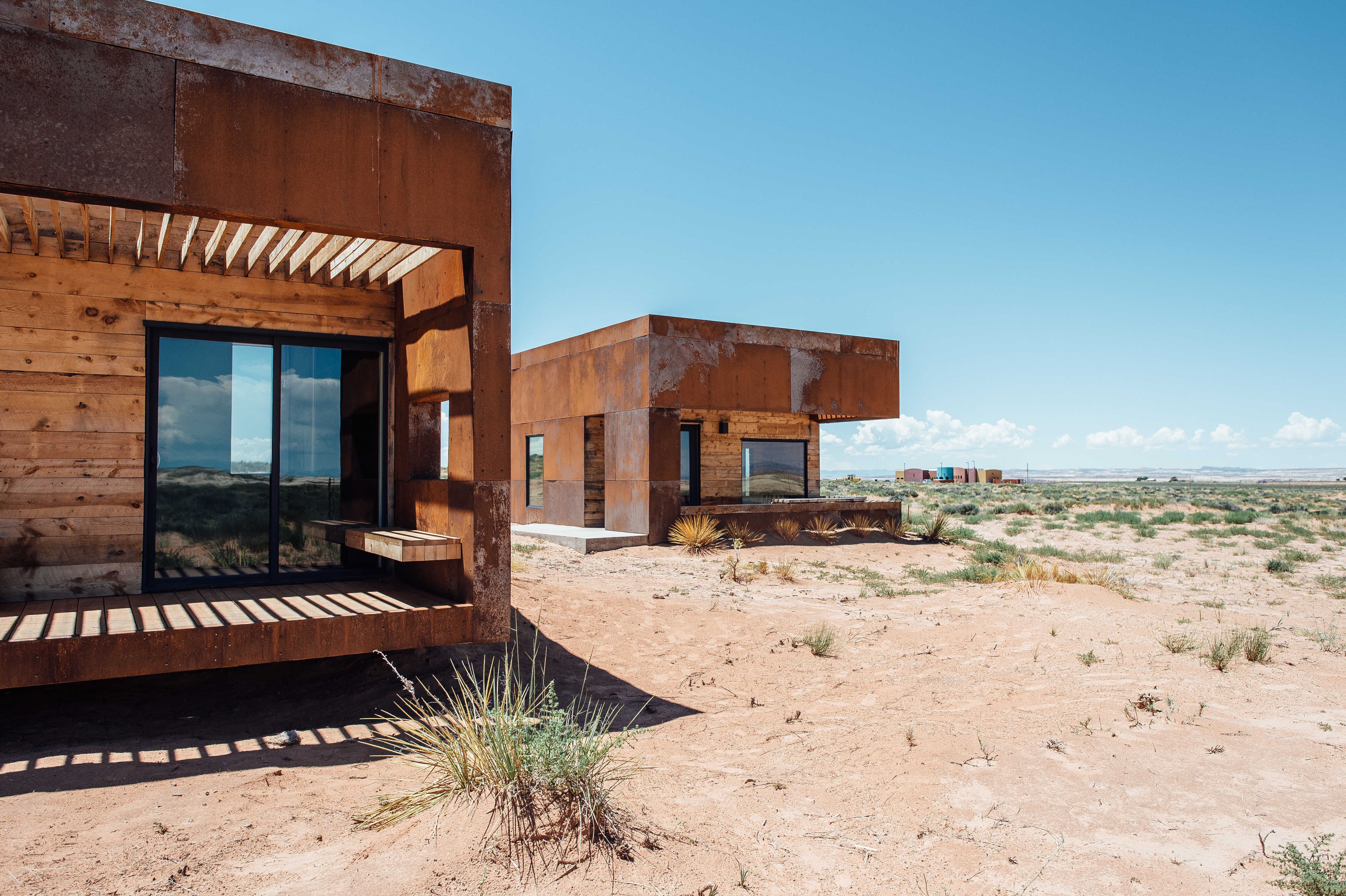


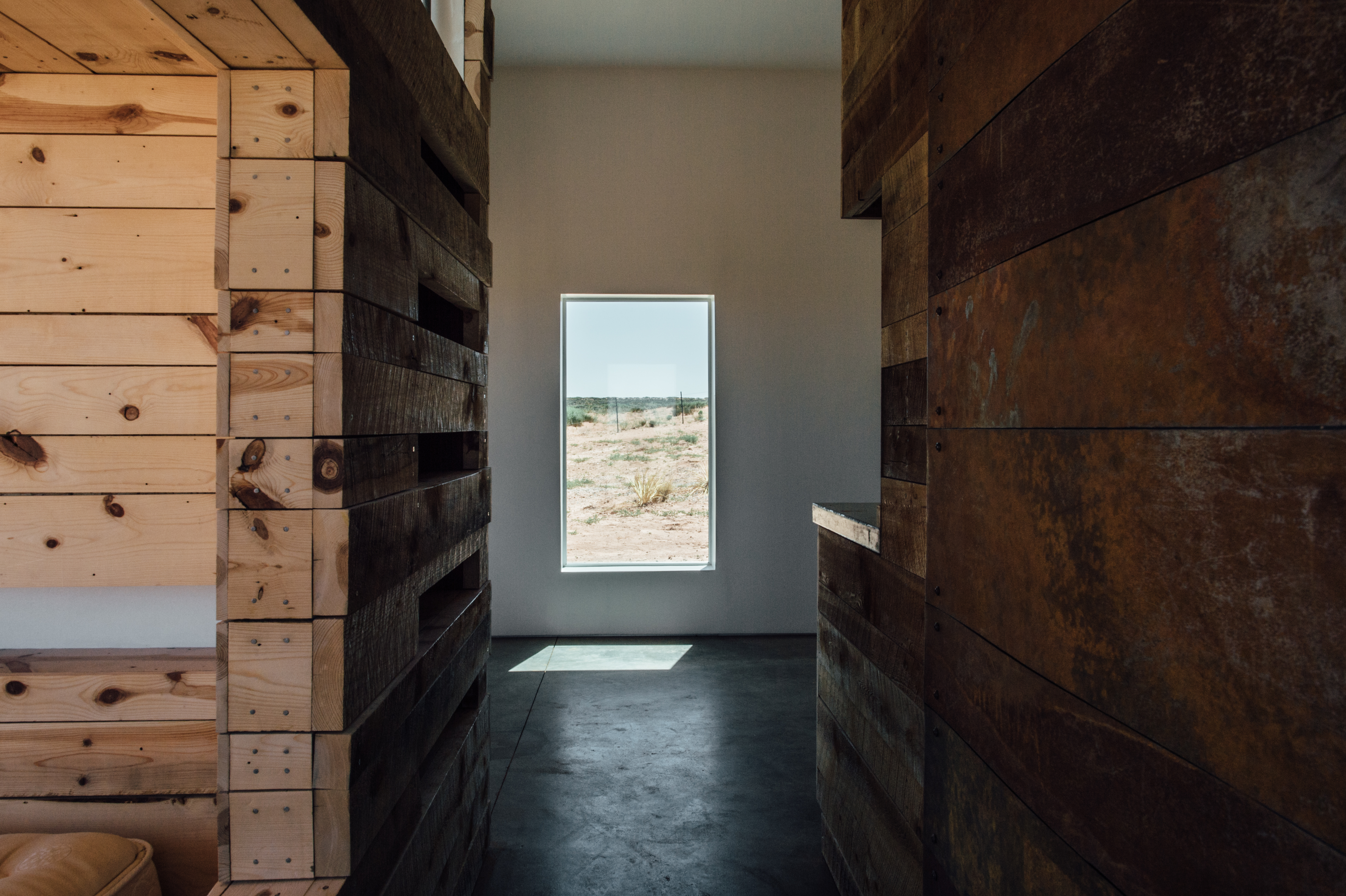
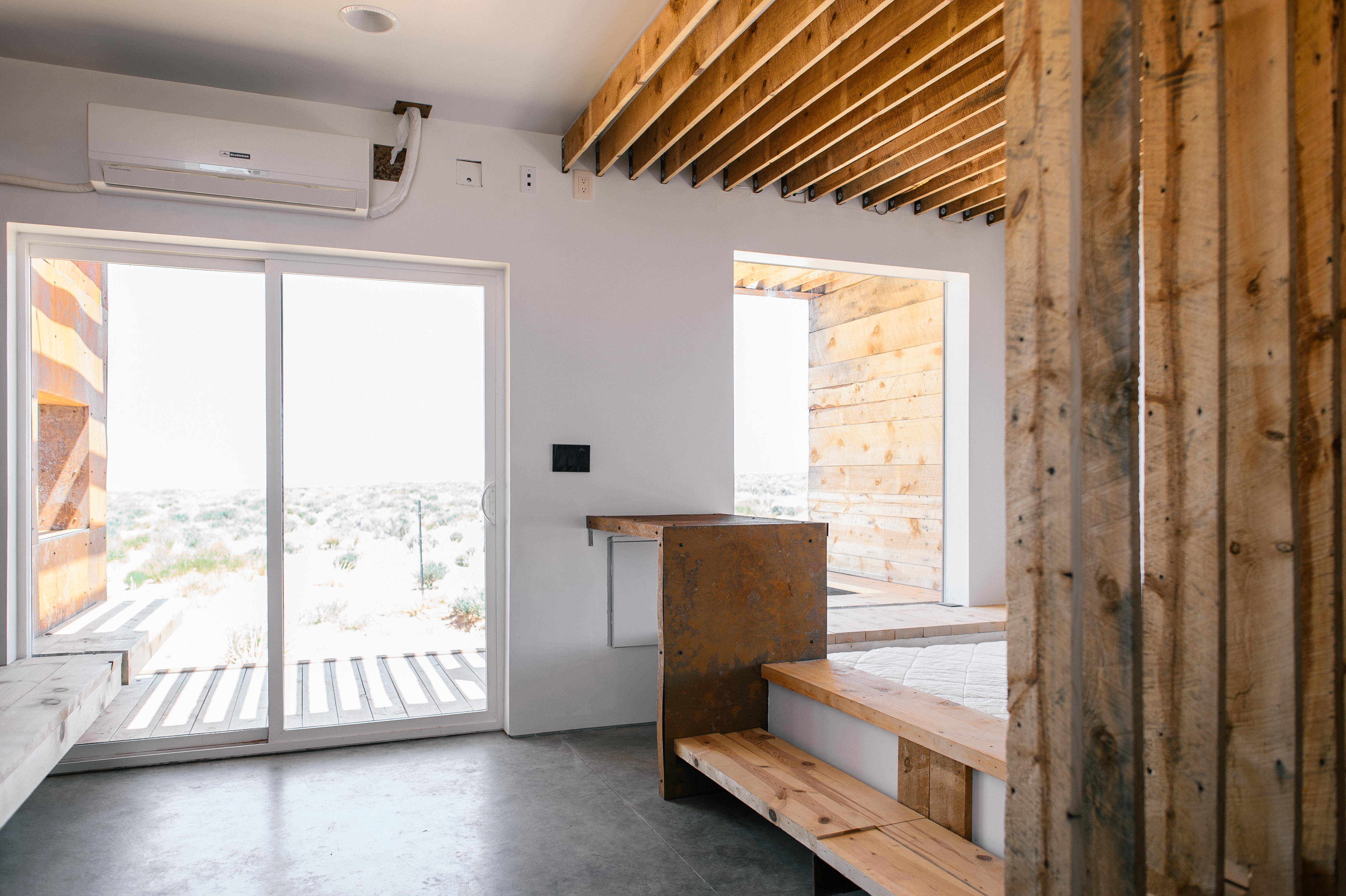
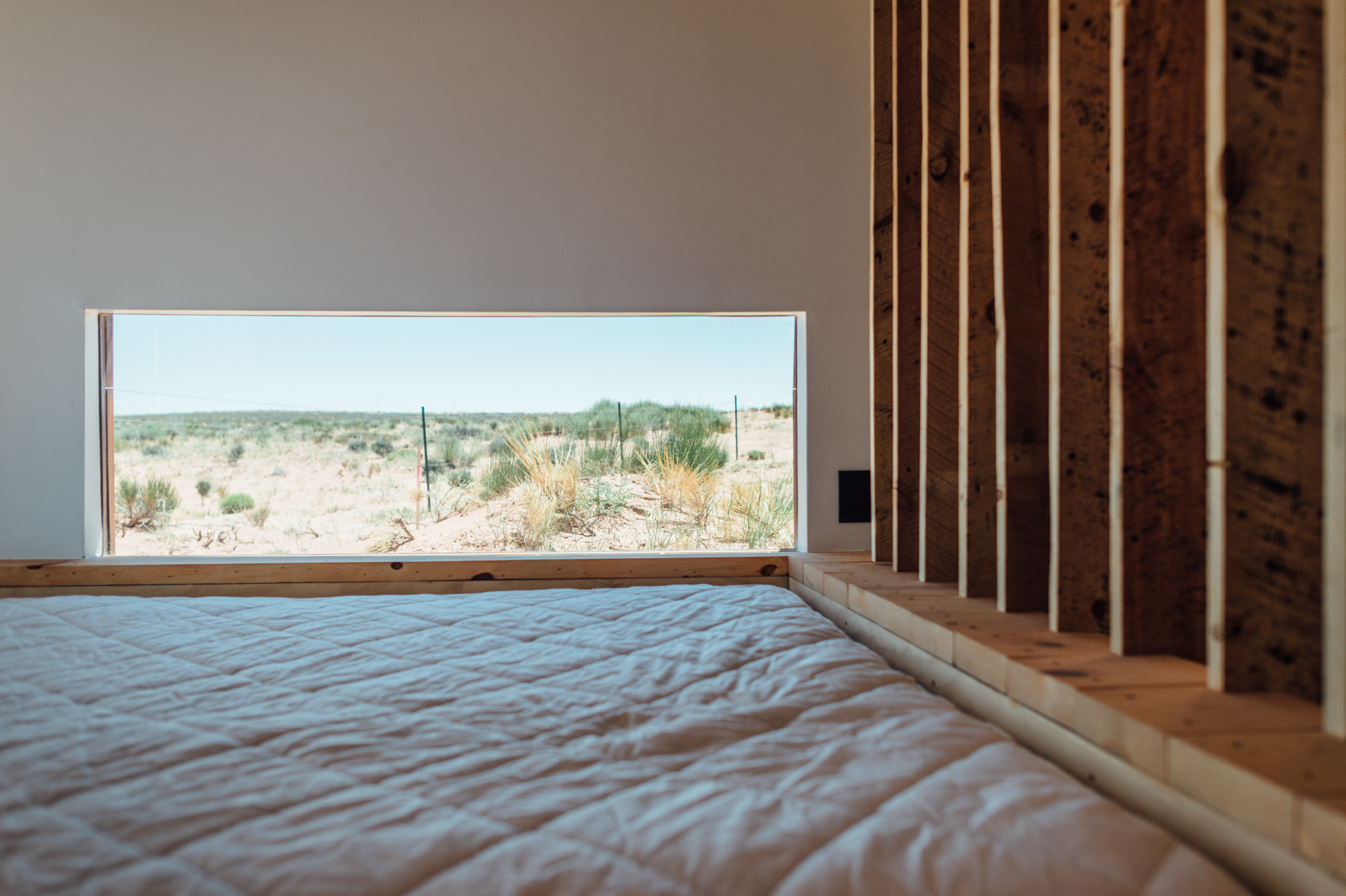
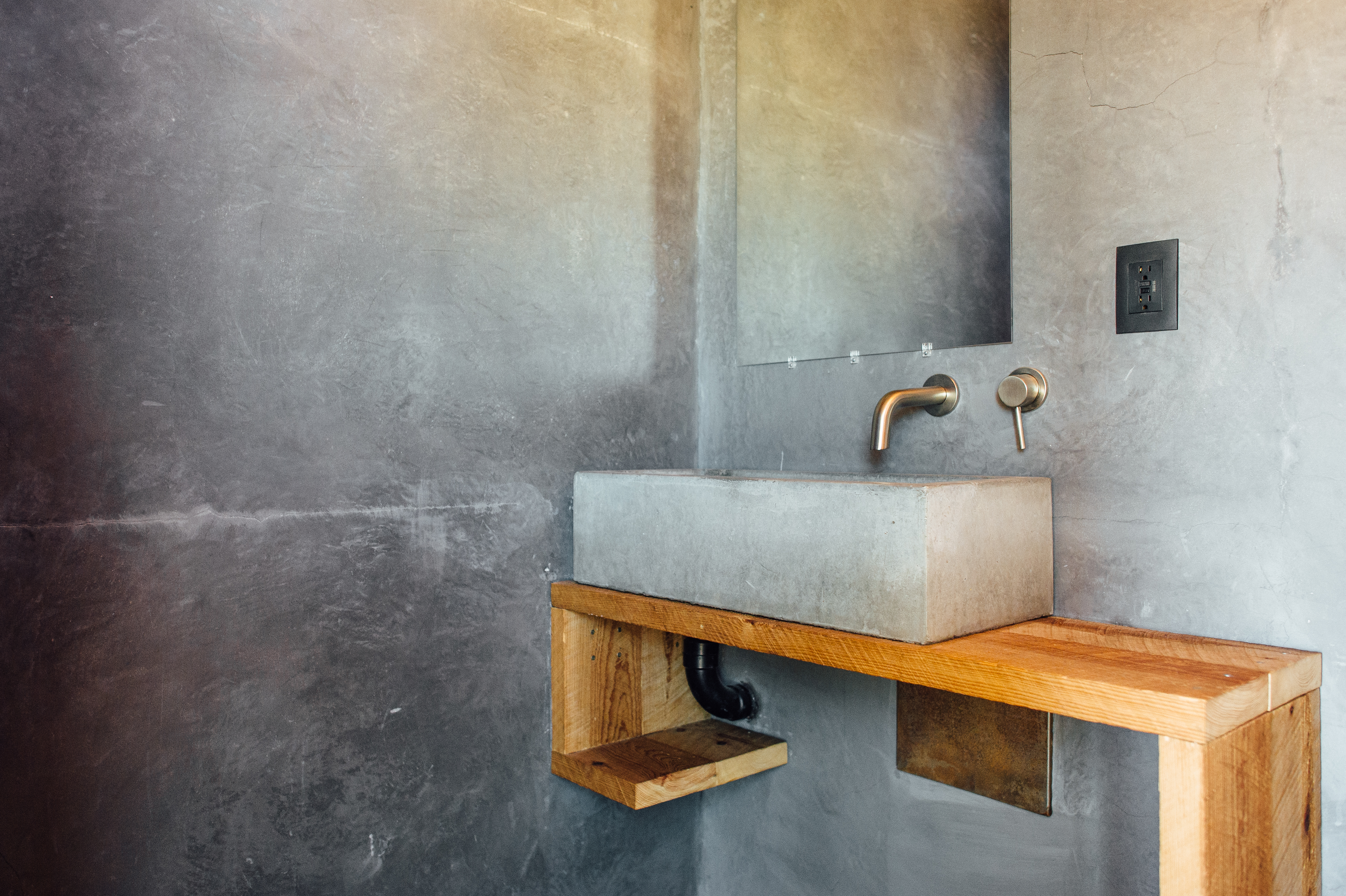
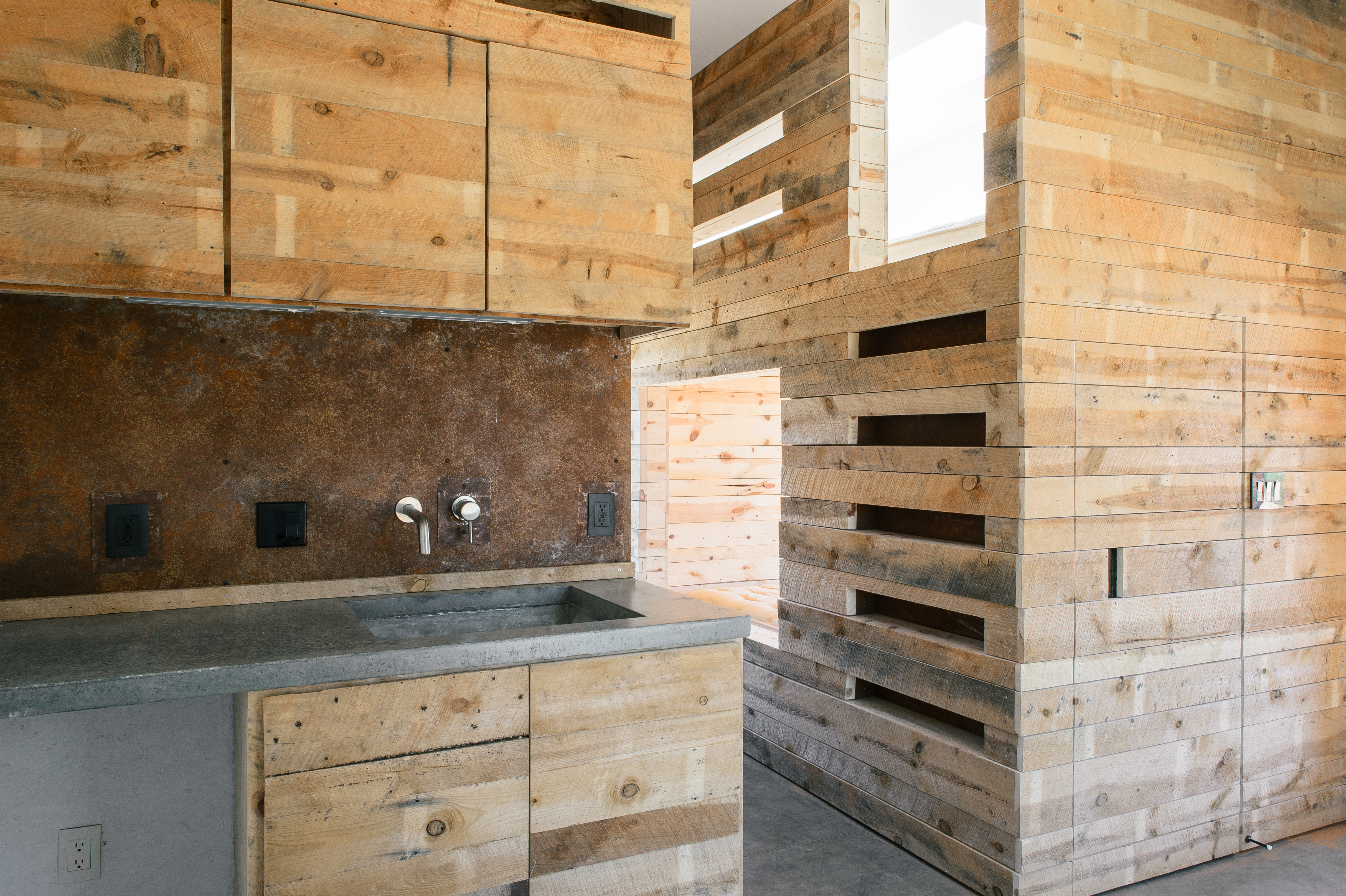
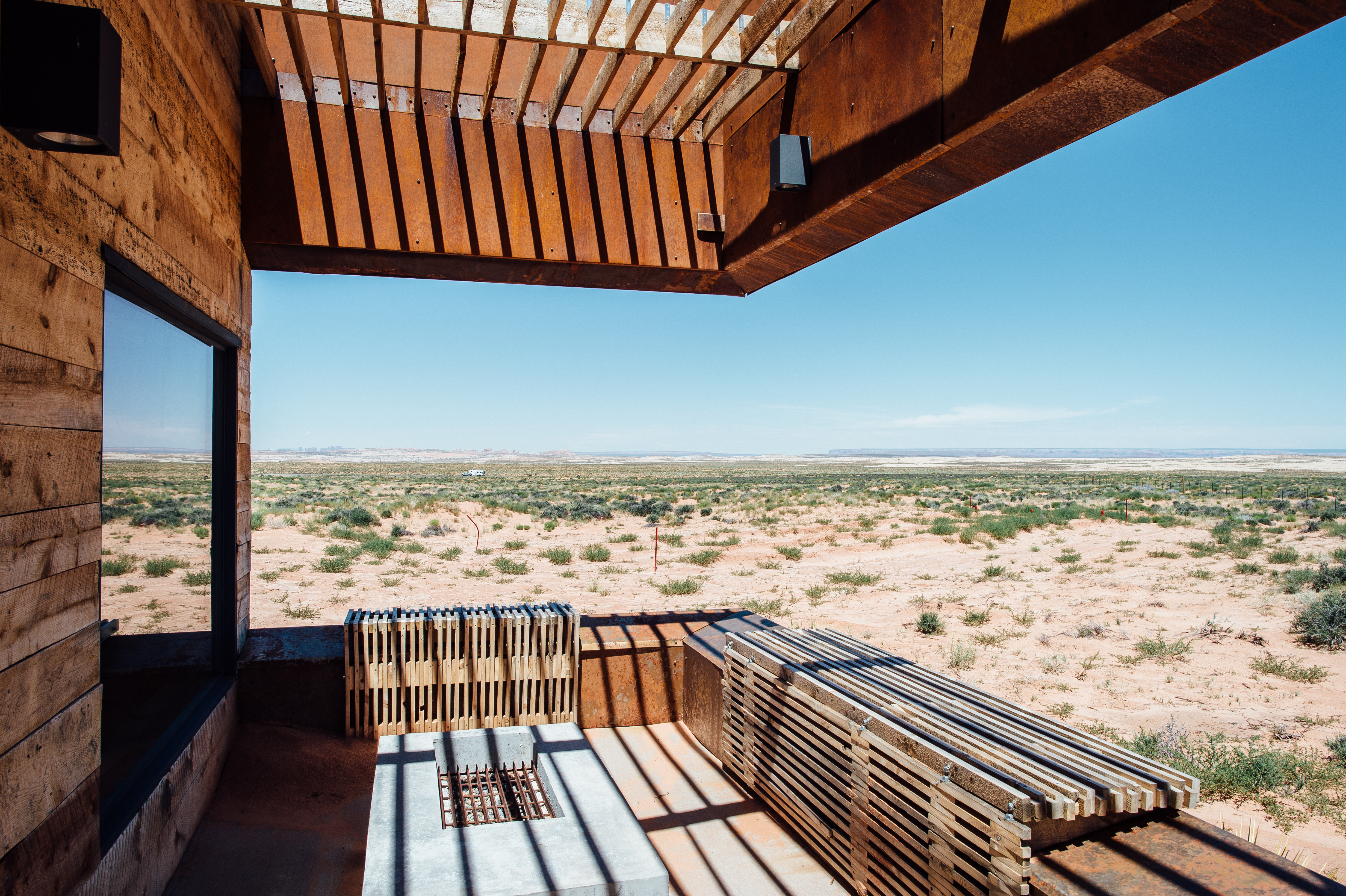

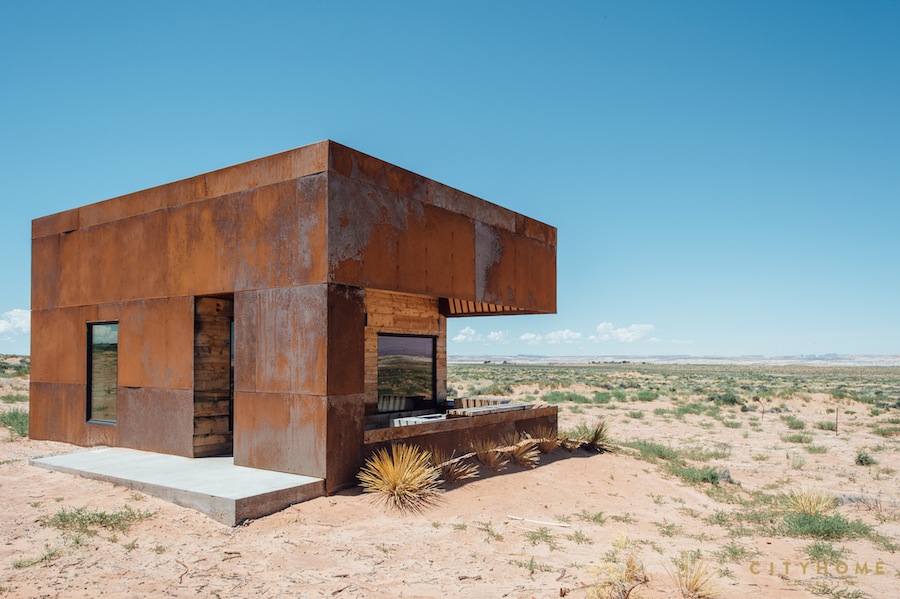
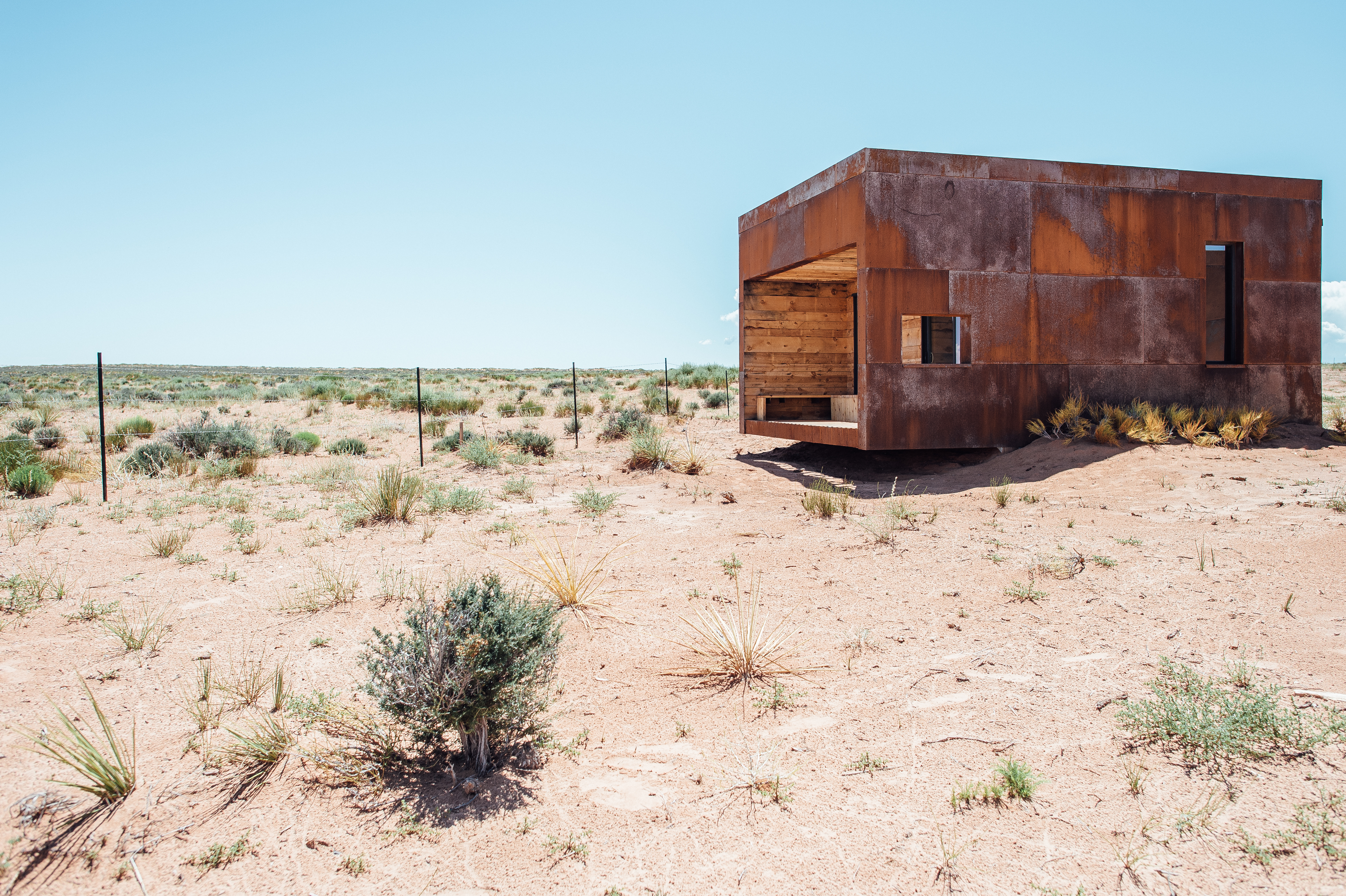

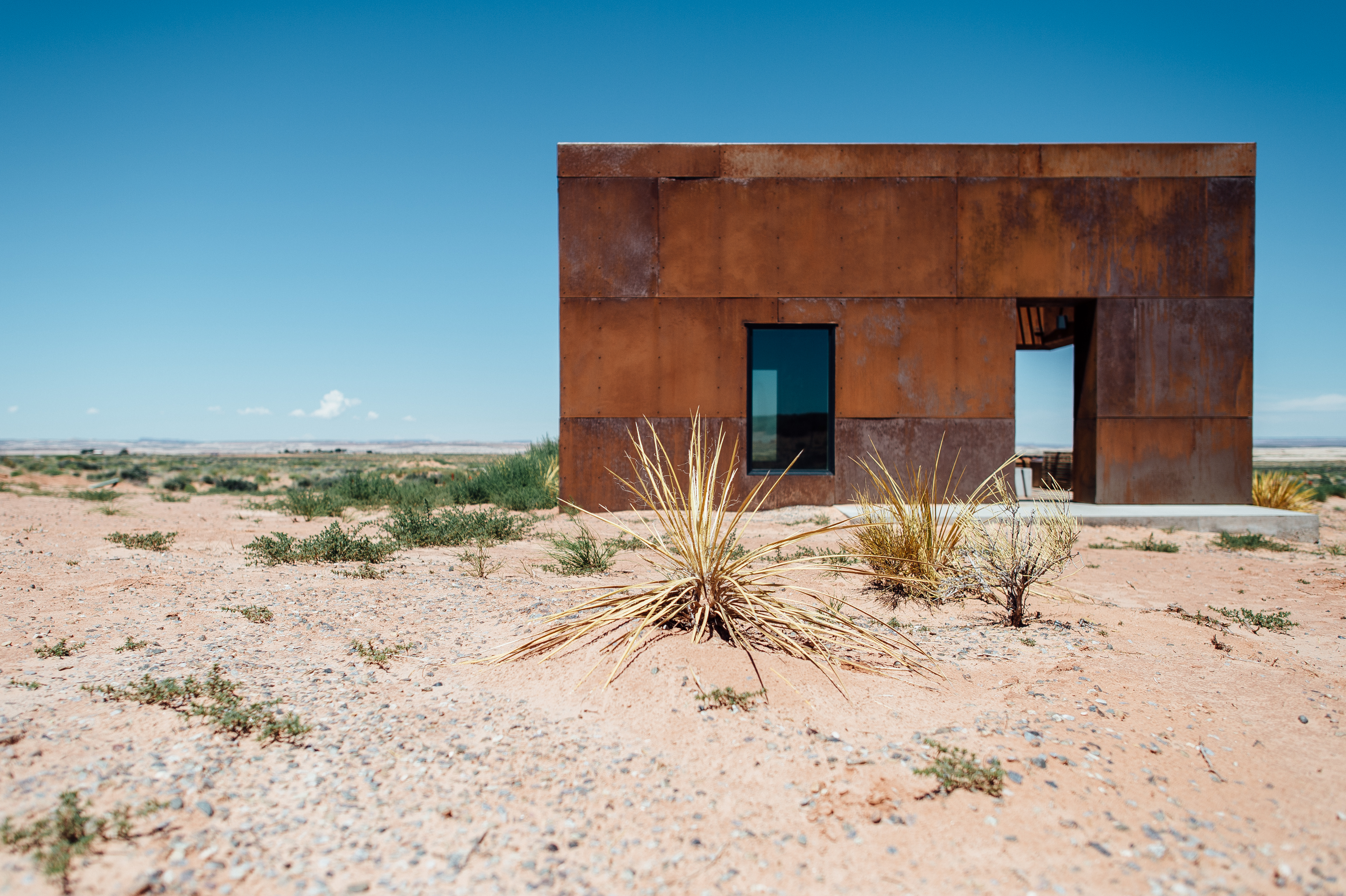
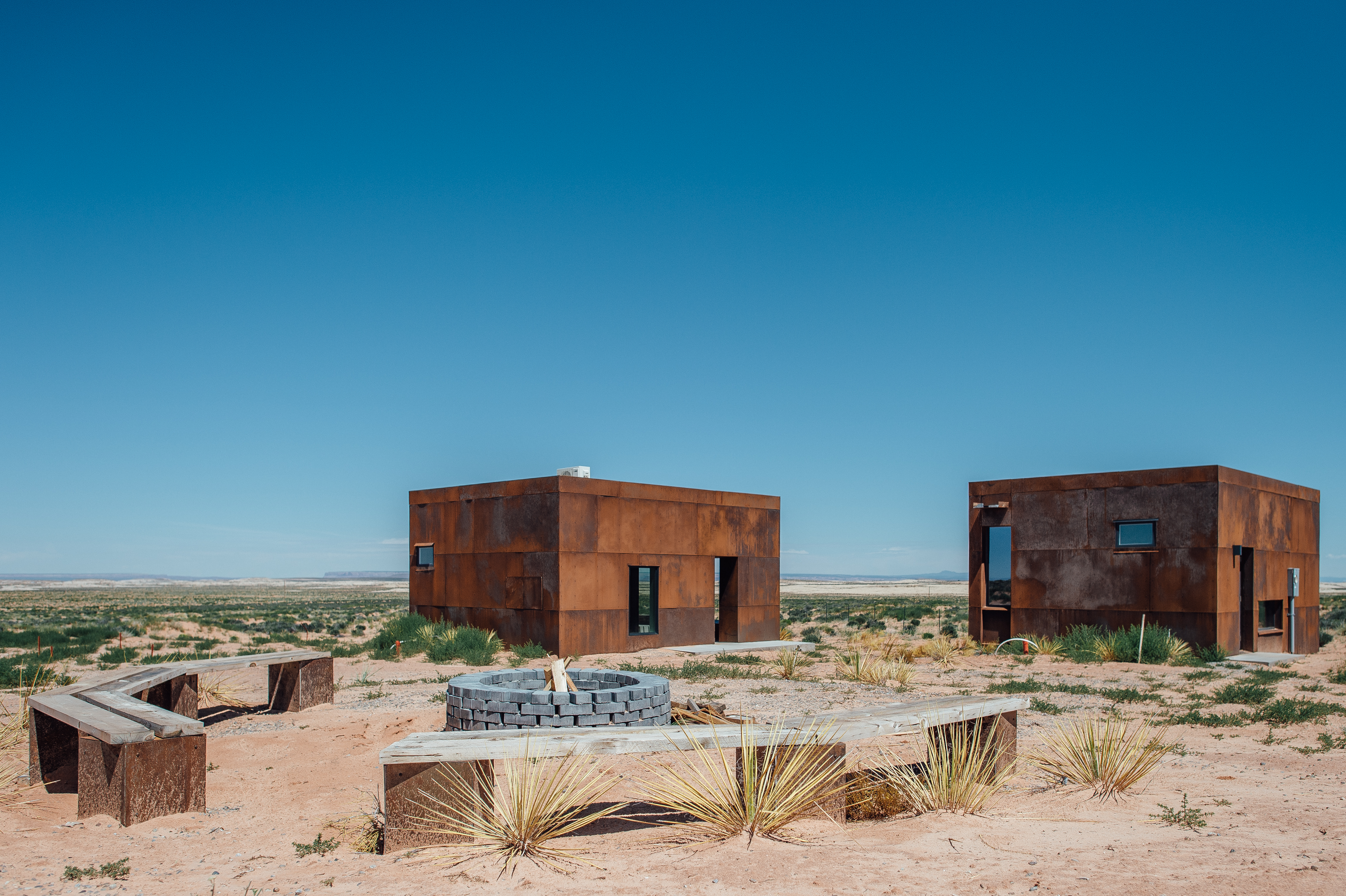
.jpg)

